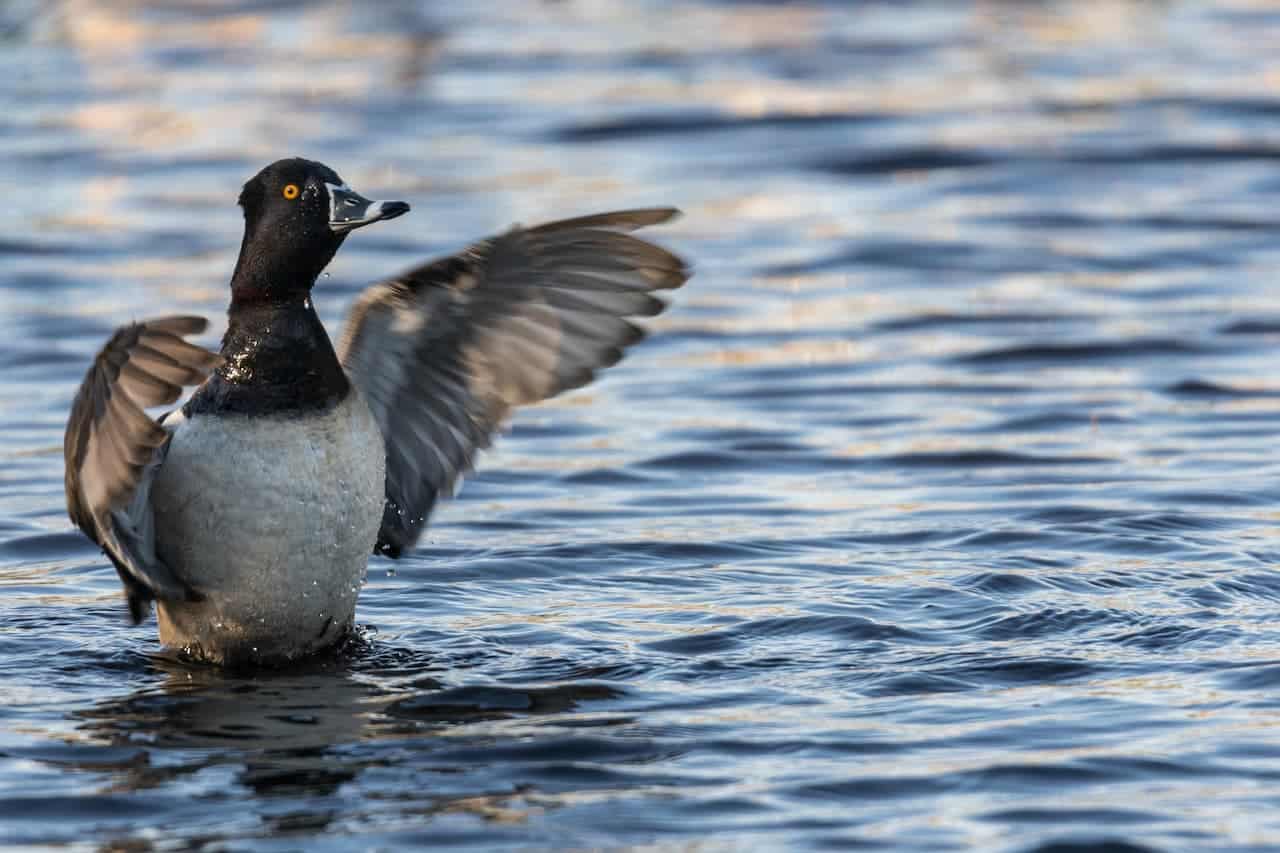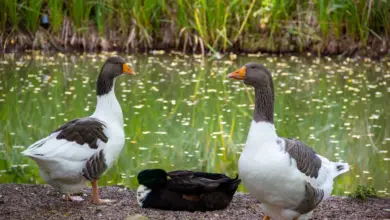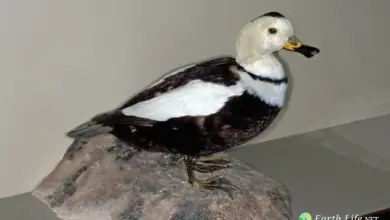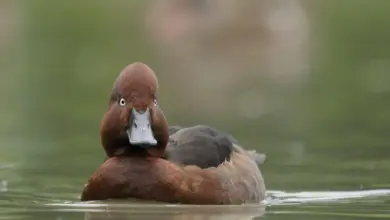The Pink-headed Duck (Netta caryophyllacea) is (or was) a large diving duck that is extinct.
It was formerly classified as Rhodonessa caryophyllacea, but has recently been shown by phylogenetic analysis to be closely related to the Red-crested Pochard, Netta rufina (Livezey, 1998), and has therefore now been transferred to the same genus. However, this has been questioned due to numerous peculiarities that set the Pink-headed Duck apart from other ducks (Collar et al., 2001).
Description:
The 60 cm long Pink-headed Duck is unmistakable. It is long-bodied and long-necked, with a slightly tufted head in the male, and a peculiar, stiff-necked posture. The adult male has a chocolate-colored body and a deep pink head and hindneck. The female and juvenile are duller, appearing much like a dark female Red-crested Pochard with a pinkish tinge to the head.
Confusion with male Red-crested Pochards stems mainly from observations of swimming birds, as the latter species also has a conspicuous red head (although the color is actually very different from the Pink-headed Duck).
Spot-billed Ducks, on the other hand, look similar to female Pink-headed Ducks when in flight and seen from a distance, and if seen from behind, they could be mistaken for males too. The upper side of the wing is distinguishing, with dark green secondaries (shorter, upper “arm” feathers – speculum) and prominent white tertiaries in the SBD and a pinkish-beige speculum (= distinctive wing patch) , much lighter than its surroundings, in the PHD. If the upper part of the wings cannot be reliably seen, they are all but indistinguishable except for expert observers in good visibility conditions.
As has recently turned out, the rare White-winged Wood Duck may also be mistaken for a PHD when swimming, especially in poor light, since it appears much like a “monochrome” version of the PHD under such conditions.
Its breeding habitat is lowland marshes and pools in tall-grass jungle. The nest is built amongst grass. They are gregarious birds, and form flocks of 30 or more. Pink-headed Ducks eat aquatic plants, and, like Netta species, typically up-end for food much more than other diving ducks.
Decline to extinction
This duck formerly occurred in easternmost India, Bangladesh and northern Myanmar, but is now probably extinct.
It was always rare, and the last confirmed sighting was in 1935, although unconfirmed reports from India persisted until the early 1960s. In 1988, Rory Nugent, an American birder, and Shankar Barua of New Delhi, reported spotting the elusive bird on the banks of the Brahmaputra.
The pair started their quest for the bird at Saikhoa ghat on the north-eastern end of the river on the Indian side of the border.
After 29 days of sailing, Nugent said that he saw the pink-headed duck amidst a flock of other waterbirds. However, Nugent’s and Barua’s claimed sighting has not been enough to remove this duck from the list of extinct birds.
Reports of pink-headed ducks were for decades received from the largely unexplored Mali Hka and Chindwin Myit drainages in Northern Myanmar, and apparently still continue. While the area is not very well surveyed by scientists, searches have been inconclusive and confusion with the Red-crested Pochard and the Spot-billed Duck has been a common source of supposed Pink-headed Duck sightings.
A report on a survey in the Hu Kaung valley in November 2003 (Nguyen, 2003) concluded that there is sufficient reason to believe that Pink-headed ducks may still exist in Northern Myanmar’s Kachin State, but a thorough survey of the Nat Kaung river between Kamaing and Shadusup in October 2005 failed to find this species (Dang, 2005); a number of interesting ducks were observed, but they turned out to be SBDs or White-winged Wood Ducks.
The reason for its disappearance was probably habitat destruction. It is not known why it was always considered rare, but the rarity is believed to be genuine (and not an artifact of insufficient fieldwork) as its erstwhile habitat was frequently scoured by hunters in Colonial times.
The Pink-headed Duck was much sought after by hunters and later as an ornamental bird, mainly because of its unusual plumage.
Like most diving ducks, it was not considered good eating, which should facilitate the survival of any remnant birds.
The last specimen was shot in 1935 in Darbhanga, Bihar, India, by C. M. Inglis, who did not even know what he had killed, till his dog, a retriever, brought the bird to him. The specimen later re-surfaced in the Government Museum in Madras in southern India, nearly 1000 miles away from where it had met its end. There it was on display at least until the 1980s.
Sir David Ezra, a European living in what was then British India, kept some of these ducks in his aviary in Calcutta until 1945, and they were also kept in Clères, France, and Foxwarren Park, England earlier. Thus, captive flocks survived until at least 1945, but never bred for reasons unknown.





